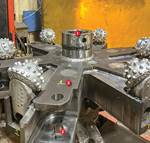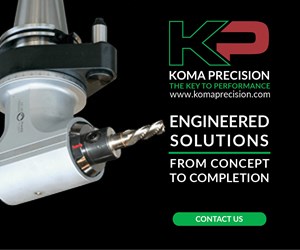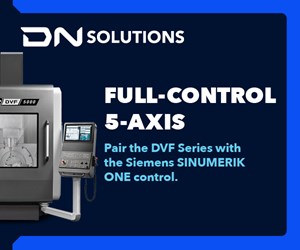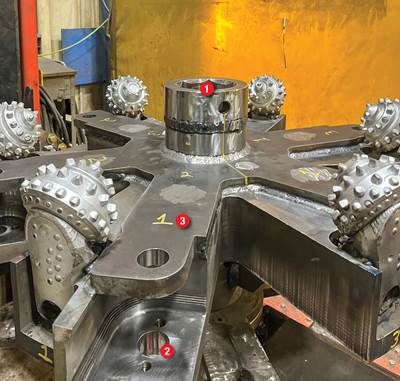Overcoming Common Operator Misconceptions
Find out what methods your CNC operators are using and make sure they are the best practices for the job.
If left on their own, most people will eventually come up with a workable solution to problems they encounter. CNC operators are no exception. If you do not provide direction and training, or if you assume people know something they don't, they will often take the initiative and figure things out for themselves.
While initiative is a good thing, and the methods created may handle the issue at hand, someone else may know of a better or more appropriate method. Here are a few common misapplications that operators may have adopted in your CNC environment:
Changing programs instead of offsets. Programmed coordinates should always reflect the mean tolerance value for each machined workpiece attribute. They should never be changed for sizing purposes. This is especially true in companies that repeatedly run the same programs, since reloaded programs must retain initially programmed coordinates. It is also important to follow this rule when the same cutting tools are used from job to job. These cutting tools will continue machining within tolerance bands (without requiring adjustment) if all programmed coordinates reflect mean tolerance values.
Since changing programmed coordinates can provide a temporary solution to a machining problem, some operators have adopted this practice. But it is one that can wreak havoc in the long term, since wasteful and redundant sizing adjustments will be required.
Not shooting for the target value. Operators must know what value they are shooting for when making sizing adjustments. It may be the mean value of the tolerance band or a value closer to the high or low limit, whichever provides the longer period of unattended operation.
Operators may make sizing adjustments that just barely bring the workpiece attribute within tolerance limits. For example, if a workpiece having a machined attribute with a dimension of 3.0 inches ±0.001 is measured to be 3.0012 inches (slightly out of tolerance, on the high side), the operator may make a -0.0003- or -0.0004-inch adjustment. While this will bring the 3.0-inch dimension within tolerance (barely), another sizing adjustment soon will be required.
Over/under tightening fasteners. Operators must be shown the appropriate tightening force to apply when tightening fasteners such as vise handles and other clamps, insert-securing screws, and collet nuts. Without guidance, people will usually tighten fasteners with as much force as they can apply. Stronger people sometimes tighten fasteners so tightly that weaker people cannot loosen them.
Sharing commonly needed items. Lost or misplaced needed items must be replaced. The more often an item is needed, the more important this point is. For example, two or more CNC machining center operators might be sharing a vise handle. This requires one operator to make a time-consuming walk to another machine when the vise handle is needed and is especially troublesome when multiple operators need it at the same time.
Not knowing or adhering to unwritten rules. Your company probably has at least some unwritten rules that workers are expected to know and follow. For example, many companies in some way relate a cutting tool’s station number to the offset numbers used to control it but provide no special instructions in this regard. A machining center program that uses station number 5 will probably use offset number 5 in which to store tool length and cutter radius compensation offset values, yet nothing in the setup or production run documentation will explicitly state this kind of offset usage.
You probably assume many things about the knowledge and skill levels of your people. While it may be impossible to document everything, you must at least ensure that your CNC operators know what you expect them to know.
Excessive insert changing. CNC operators must know when cutting tools and inserts must be changed. This is especially important with production runs that have large lot sizes. You may find that your operators arbitrarily index or change all inserts at the beginning of their shifts. Though it may make sense to them to start each shift with a fresh set of cutting tools, this practice can be very wasteful.
Additionally, when it comes to dull tool replacement, operators may err on the side of caution and swap out dull tools much sooner than is required. While this is better than the alternative (waiting too long and allowing a cutting tool to break), they should be provided with an appropriate expected tool life for the cutting tools used in a job.
What Else?
The only way for a company to uncover undesirable behavior related to its CNC operations is to get involved with its CNC people. You may be surprised—both positively and negatively—by the methods your operators use.
Read Next
The Cut Scene: The Finer Details of Large-Format Machining
Small details and features can have an outsized impact on large parts, such as Barbco’s collapsible utility drill head.
Read More3 Mistakes That Cause CNC Programs to Fail
Despite enhancements to manufacturing technology, there are still issues today that can cause programs to fail. These failures can cause lost time, scrapped parts, damaged machines and even injured operators.
Read More
.jpg;width=70;height=70;mode=crop)




.png;maxWidth=300;quality=90)













